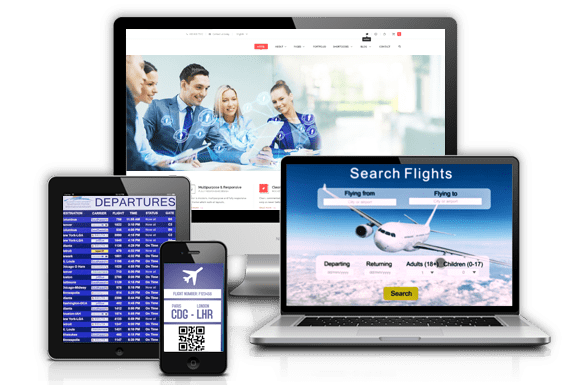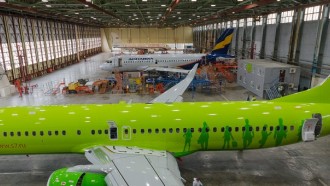Amos Aircraft Maintenance Program Software
Basic Analysis in AMOS and SPSS. Best Aviation Maintenance Software. Amos Carpentry & Weatherization Training Program. Skill Building + Community + Education.
Comments: AMOS is great standard aircraft maintenance software on a desktop in the office. All in one solution. As user worked 8 years with AMOS software controlling MRO/Part M/CAMO 50 aircraft fleet.
Remark is that you can be 'lost' in AMOS in the different menus and subsequently details available in the system. Engineers find it hard to use AMOS in their environment at the aircraft. A mobile solution for engineers is needed soon to make their life easier in using AMOS at the aircraft. The time that everything is done in the office is past and we need hands-on-tools at the plane with simple apps. We can not let software slow down our turn-around-time anymore.
It's a tool that needs to be available at all times, everywhere and with ease. MROair is developing a solution for MRO's interfaces with AMOS to deliver real-time information like timetable, AMM/IPC/MEL lookup, Non-routine, and stock information. Simple and efficient.

This buyer's guide, along with our aircraft maintenance software reviews, cover the essential information needed to make a smart purchase. In this guide, we'll discuss: What Is Aircraft Maintenance Software?

Aviation maintenance software tracks and simplifies the constant maintenance, repair and overhaul (aviation MRO) operations associated with the aviation industry. It performs a number of essential functions, such as:. Monitoring inventory.
Supporting preventive and essential maintenance and repairs. Scheduling work orders. Tracking and documenting compliance Overall, aviation maintenance tracking software (or MRO software) helps organizations maximize their efficiency, letting them focus on their jobs and keep their facilities and aircraft running smoothly and safely. Common Features of Aircraft Maintenance Software Common functions of aviation management software include: Inventory control and processing Track the status and usage of rotables and consumables across multiple locations and currencies, allowing for exchanges and inter-base transfers to reduce waste and over- or under-storage, maximizing inventory usage and lifecycles.
Since preventive schedules are predefined based on the aircraft, many aviation MRO solutions define that schedule for you, simplifying the entire process. In addition, smart systems can identify common problems based on history, cycle counters, RINs and physical/electronic symptoms such as vibration, noise, output etc., alerting you to potential hazards before they become urgent.
Operators need a simple way of bringing needs to the attention of personnel, who need to prioritize requests, schedule tasks and initiate and close work orders as simply as possible. Cost accounting An advanced reporting feature of aircraft management software—cost accounting—enables you to track the costs of all repairs, allowing you to monitor common problems, replace high cost aircraft etc. Compliance In one of the world’s most tightly regulated industries, an effective aviation management solution should monitor compliance issues. This includes tracking inspections, component failures, Airworthiness Directives, Service Bulletins etc., always maintaining appropriate documentation and flagging any potential compliance concerns. In addition to the above, many companies offer full-suite aviation management software solutions that move beyond the realm of maintenance into other departments within the aircraft operation industry. These aircraft will incorporate some or all of the following features or functionality: Aviation operations management Maintain complete control over your fleet, tracking purchases and sales, production, flight paths, operations, hours, fuel usage, reliability, loans/rentals, warranties etc.

Amos Maintenance
Customer and vendor management From single charter aircraft operators all the way up to billion-dollar airlines, maintaining customer information for effective communication, pricing and sales strategies is a key element of success. Billing and accounting Whether you’re billing a few customers at thousands of dollars apiece or millions of customers at hundreds of dollars apiece, accounting is a crucial function. On the expense side, this will integrate seamlessly with your inventory control and fleet management capabilities. What Type of Buyer Are You? In our experience, most aviation software buyers fall into one of the following categories: Small charter companies.
If you only operate a handful of aircraft out of a handful of bases, you’ll probably want a fairly “basic” (as these things go) aircraft maintenance software solution that has strong support but without too many extra features. Larger charter companies and freight airlines. As the company size grows, additional features like intelligent forecasting and cost accounting all become more important. Even more so, integration with other departments, such as aviation operations management, sales and accounting, becomes crucial to company-wide success. Aircraft maintenance specialists. Buyers who exclusively provide the service of maintaining other operations’ aircrafts will want a best-of-breed solution that offers extensive functionality within this market. Exchanges between bases becomes less important, but assigning parts to different customers become more so.
Therefore, they may also want accounting support and HR support to tie costs, labor and revenues with the associated customer. Commercial airlines. The largest companies dealing with hundreds of planes, thousands of customers and millions or billions of dollars in revenues and expenditures need highly robust aviation management systems that can manage their complex and rigorous demands. This may mean one large system that combines everything, or it may mean best-of-breed systems that integrate extremely well together. Regardless, be sure to talk to other departments and consider how your software will fit with their processes as you make your purchase decisions. Market Trends to Understand As you evaluate aviation management software, keep these trends in mind.
How your vendor fits with these trends could have a big impact on their viability. Software as a Service (SaaS). Web-based software is becoming more popular across most industries and markets, and aviation management is no different. Most companies prefer the simplicity of a hosted solution that lets them worry about maintaining their aircraft, not their software solutions. Mobile devices. Needless to say, people who work in the aviation industry move around a lot. Neither aircraft operators, nor personnel should have to locate a physical desktop computer in order to use their management software.
Both want to be able to input and download information at the most valuable point of use—the airplane or hangar. Most vendors already offer mobile accessibility, so be sure to look at their mobile offerings before making any decisions.





